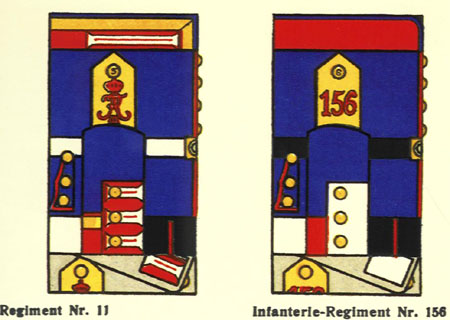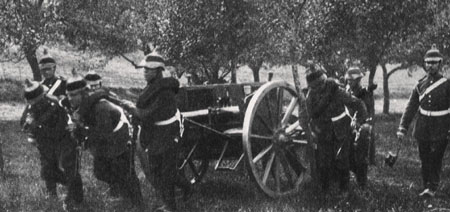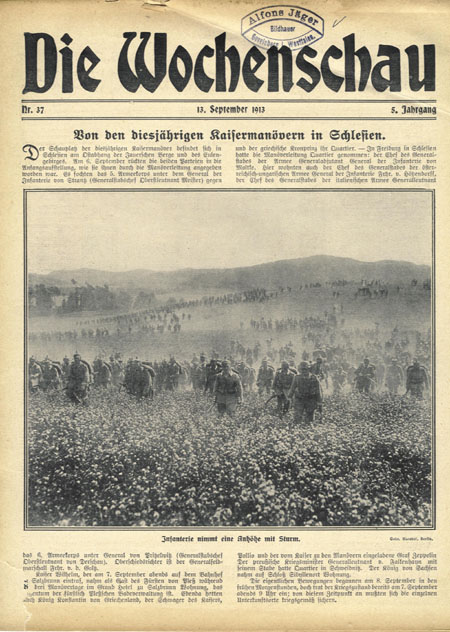Looking Deeper into History.
Joseph P. Robinson.
20 August 2005.

This is an incredibly famous picture. Students worldwide of World War I have gazed upon this picture to get a feel for the German assault in France and Belgium in 1914. History book after history book has copied this picture, cropped it changed it may be a little bit and included it in their works. For instance, the 2003 “All the Kaiser’s Men” on page 16 includes this photo with the caption: German infantry advance to contact in France August 1914. Not to single this work out as collectors and historians will recall the same picture from childhood. This is an oft repeated picture with maybe no more famous picture then this representing the German attack in 1914.
There have been questions as folks have blown the picture up and faintly discerned guard Litzen are on the uniforms and maneuver bands on the helmets. This did not make sense, especially given that some sources attributed the picture to Lorraine, where no guard units fought. The helmet detail of the maneuver bands was faint at best, maybe even airbrushed, but certainly would lead to some questions. The pictures below show the 11th Grenadier Litzen and maneuver bands worn by an artilery unit from a 1912 picture.


Below is a source picture. It comes from the 13 September 1913 copy of a German newspaper. The main title says from this year’s Kaiser Maneuver in Schlesien. Further reading attributes the maneuver to the VI Army Corps. VI Army Corps definitely came from the area cited. The Litzen on the uniform might indeed be from the 11th Grenadier Regiment of the VI Army Corps.
There is no way to prove exactly what this is a picture of. The photograph may have indeed, predated this newspaper significantly. One thing is for certain and it will certainly change the way we look at traditional histories. This picture was not taken after 13 September 1913, and it was not taken in France, Belgium or Lorraine. This just goes to show that collectors and historians cannot rely upon “conventional wisdom” when dealing with any issue.

There is no way to prove exactly what this is a picture of. The photograph may have indeed, predated this newspaper significantly. One thing is for certain and it will certainly change the way we look at traditional histories. This picture was not taken after 13 September 1913, and it was not taken in France, Belgium or Lorraine. This just goes to show that collectors and historians cannot rely upon “conventional wisdom” when dealing with any issue.

